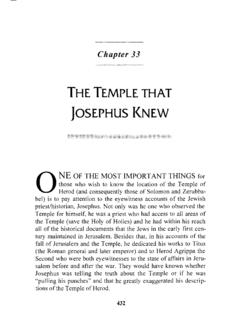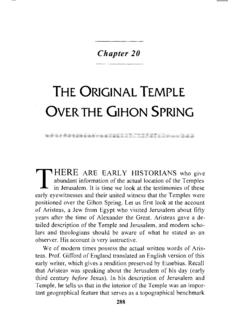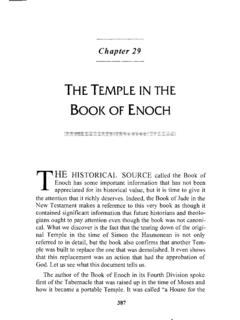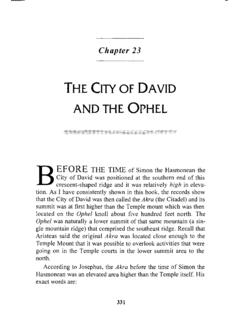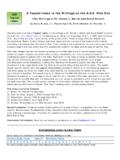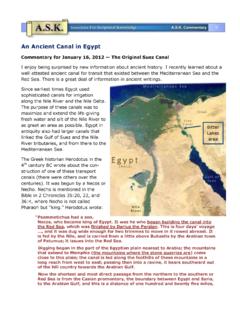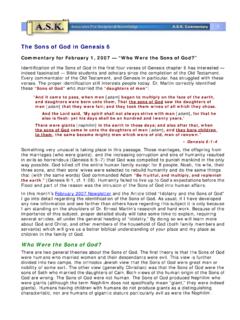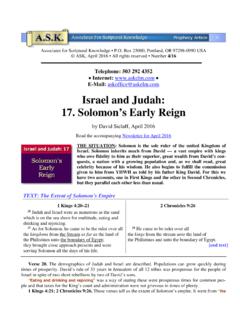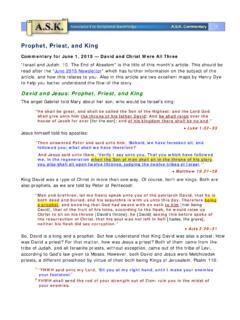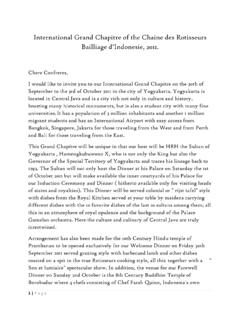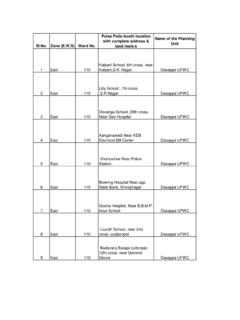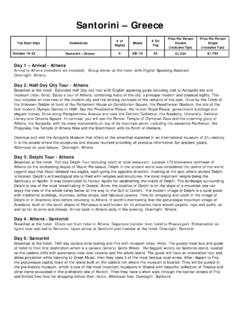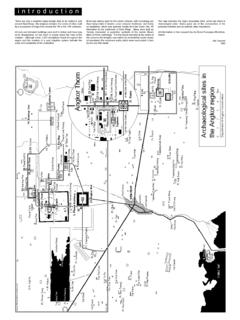Transcription of CRITICAL PROBLEMS FACING SIMON THE …
1 Chapter 24. CRITICAL PROBLEMS . FACING SIMON THE. HASMONEAN. L ET US NOTICE some important historical observations from the Bible and secular history that explain what SIMON the Hasmonean had to do in order to re-establish what he considered to be a proper divine worship for the Jewish people in Jerusalem. The Book of First Maccabees tells us that at the beginning of SIMON 's reign (after he dislodged the Macedonians from the Akra on the southern tip of the crescent ridge), he first began to reinforce the Akra and the original temple Mount. 486 This initial action of SIMON returned the geographical situation to the status quo that had existed before the time when Antiochus Epiphanes desolated the temple in 167 But to SIMON , this former 486 I Maccabees 14:37.
2 340. The Temples that Jerusalem Forgot 341. status quo presented a problem of the first magnitude concerning the security of the Jewish people at their capital of Jerusalem. This former geographical situation left the Akra in a location of invul- nerability and potentially it was still a fortress that could be used to threaten Israel at a future time if the Gentiles would recapture it. It was because of this future possibility, among other things that I. will soon relate, that SIMON devised a momentous plan. SIMON decided to change his mind about the Akra. After secur- ing all of Jerusalem, he stopped the rebuilding of the Akra (which the Jews were again fortifying).
3 Josephus states that SIMON con- sulted with the authorities in Jerusalem and they all confirmed it was better for the protection of the nation and the temple that the Akra should have its summit reduced in size. 487 They then assigned men to begin the destruction of that southern summit. As Josephus stated: "So they all set to and began to level the hill."488 After accomplishing this leveling, the result made the adjacent hill called the Ophel (on which the temple stood) higher than the former Akra. 489 But SIMON went even further than this. He thought it was prudent if he thoroughly leveled the Akra to the ground, to the very bedrock.
4 And this he did. Josephus said they continued their work and finally "razed the Akra to the ground.' 490 Josephus said: "So they all set to and began to level the hill [the Akra], and without stopping work night or day, after three whole years brought it down to the ground and the surface of the plain."491. They cut to the bedrock the Akra. This meant that the Ophel knoll just to the north (on which the temple stood) was then higher in elevation than the Akra as Josephus But this did not end the matter. With the Akra cut down, the temple was now left without a fortress to protect it. This new condition would have allowed the temple to be com- pletely vulnerable to enemy attack.
5 There was, however, another 487 War , I. 488 Antiquities ,7. 489 War , I. 490. War ,2. 491. Antiquities , 7 words in brackets mine. 492 War , I see the Whiston and Comfeld translations. 342 The Temples that Jerusalem Forgot problem that SIMON encountered. Besides the threat of Gentile enemies there was a domestic reason why the early Jewish authori- ties realized they needed a fortress next to the temple . This was essential in order to protect ordinary law-abiding worshippers in Israelite society from unruly Israelites who may have had inten- tions to revolt and to go to war. A fortress next to the temple was needed to supervise the crowds if they would become actively dis- turbed.
6 Recall that vast crowds were accustomed to congregate in the temple at the three festival seasons of the Jews. At times those crowds could become unruly or agitated and armed forces were necessary to quell the worshippers as the need arose. 493. SIMON was presented with a major problem. The original Akra (the City of David or Zion) had been leveled to the ground. There was no longer a fortress adjacent to the temple for protection pur- poses and to supervise the worshippers. This new geographical situation was not conducive to maintaining a peaceful social exis- tence in Jerusalem, even among Jews. This weak environment of insecurity could not be allowed to continue.
7 SIMON then made a significant decision. SIMON and the Jewish authorities noticed a prophecy in Isaiah 29 that the whole of the City of David (then called Ariel) was pro- phesied by God to be leveled to the ground. Indeed, such destruc- tion of the original Zion is effectively what SIMON and the people of Jerusalem had done. It took them three years of night and day work to chisel and to shovel the whole mountain of Zion down to the very ground. The prophecy may have given the authorities the vindication they needed to demolish the mountain of Zion (since it gave them God's approval in the enterprise). The actual Mount Zion was effectively removed (demolished).
8 From the surface of the earth. We will soon see that before SIMON had Mount Zion destroyed, he moved as many (probably most) of the buildings (including David's tomb) up to the southeast ridge in what became known as the Upper City. In effect, SIMON simply moved "Mount Zion" and most of its buildings directly west across 493 Josephus gave an astute observation that was always true. He said: "It is on these festive occasions that sedition is most apt to break out" (War ,3). The Temples that Jerusalem Forgot 343. the Tyropoeon Valley and up to the top of the western hill. This accomplishment of cutting down to the ground the former Mount Zion with its citadel, though wonderful in its engineering feat, still left the temple without a fortress to protect it or to super- vise the crowds at the times when Israelites would come in droves to the capital city.
9 Something more had to be done to re-introduce a new Citadel that Israelites could supposedly control. In simple terms, SIMON and the Jewish authorities had com- pletely destroyed the original city of Jerusalem (with its Citadel and Mount Zion) and they left the southeast ridge without its for- mer Akra. What an anachronism! What had once been a high area called "Mount Zion" and reckoned as being the "utmost heights,". was so leveled to the ground that it now became known as "the Lower City." This was a major geographical alteration for the area. The Building of a New Zion on the Western Ridge Nostalgia as well as good common sense made SIMON and the authorities at Jerusalem select a new area to be called "Mount Zion.
10 " They did this by tearing down many of the original build- ings on the former Mount Zion and rebuilt them in a new area. They picked the region just to the west of the former (and original). Zion. As stated before, they transferred almost everything up to that new area. This included even the Tomb of David. 494 They built a new cenotaph for David and from the time of SIMON on- ward, it was this newly rebuilt area that became known as "Mount Zion" and the new official place for the "Tomb of David"495 They 494 Clearly, the original Tomb of David was located in the vicinity of the City of David on the southeast hill called the original Zion.
